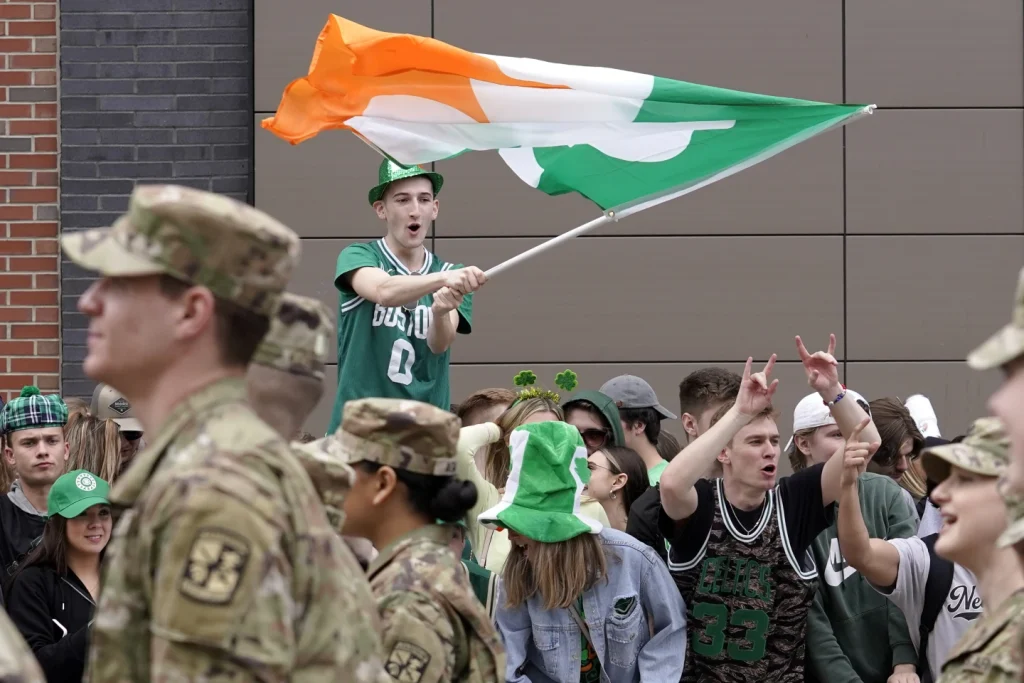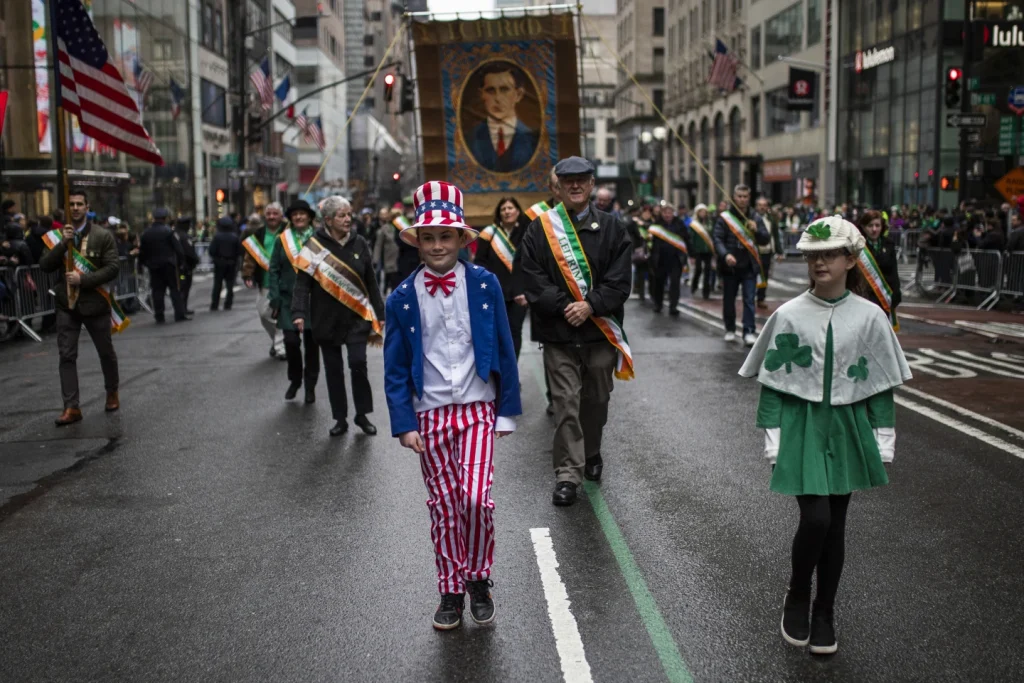The vibrant green hues adorning the streets, the jovial parades that wind through cities, and the festive foods and drinks all point to one thing – the arrival of St.
Patrick’s Day in America. This annual celebration honoring the patron saint of Ireland has transcended borders to become a global phenomenon, with the United States standing out as a particularly fervent participant in the revelry.
From its humble origins as a solemn religious observance in Ireland, St. Patrick’s Day has evolved into a cultural extravaganza in America, where people of all backgrounds come together to partake in the festivities.
The roots of St. Patrick’s Day in America can be traced back to Irish American communities, where the day was transformed into a celebration of Irish heritage.
What began as a religious day of observance in Ireland took on a new life in the United States, evolving into a colorful and spirited commemoration that goes beyond mere revelry.
It became a way for Irish immigrants to establish a sense of belonging and to stake a claim on the country’s cultural calendar.
The figure of St. Patrick himself adds a layer of complexity to the celebration. Contrary to popular belief, St. Patrick was not Irish by birth.
Born in the late fourth century, he was captured and enslaved in Ireland as a young man. After escaping and receiving religious training in Europe, he returned to Ireland in the fifth century to spread Christianity.
Eventually canonized by the Catholic Church, St. Patrick was designated as Ireland’s patron saint, a figure revered by both Catholics and Protestants alike. His feast day, March 17th, became a day of celebration and remembrance.
The question arises: how did a day dedicated to an Irish saint become such a prominent fixture in American culture?
The answer lies in the migration of Irish people to the United States, bringing with them their traditions and customs. St. Patrick’s Day observances in America predate the country’s founding, with cities like Boston and New York City hosting early celebrations.
The first St. Patrick’s Day parade in America took place in Manhattan in 1762, marking the beginning of a tradition that would endure and evolve over the centuries.
While St. Patrick’s Day retained a more religious and somber tone in Ireland well into the 20th century, in America, it transformed into a lively and exuberant celebration of Irish culture.
The day is now characterized by parades, music, dancing, and an abundance of green attire and decorations.

It has become a day for people of all backgrounds to come together, embrace the spirit of Irish heritage, and revel in the camaraderie that the occasion fosters.
In conclusion, St. Patrick’s Day in America is more than just a day to wear green or enjoy a pint of Guinness. It is a celebration of resilience, cultural pride, and the enduring spirit of a community that has made its mark on the American landscape.
As we raise a toast to St. Patrick and all things Irish on this festive day, let us remember the rich history and traditions that have shaped this beloved holiday into the vibrant and inclusive celebration it is today.
Celebrating holidays holds a significant place in society, far beyond mere frivolity or superficial traditions. These occasions serve as more than just opportunities to watch parades or don specific attire; they are integral to the cultural fabric of a community, reflecting its values, history, and identity.
In essence, observing holidays is a way of establishing a connection to a shared heritage and affirming one’s place within a larger societal framework.
According to Leigh Schmidt, a distinguished professor at the Danforth Center on Religion and Politics at Washington University, celebrating holidays is akin to “putting down roots” in American culture.
By participating in these communal festivities, individuals and groups assert their presence and significance within the broader American narrative.
This act of recognition on the national calendar not only acknowledges the diverse tapestry of cultures that make up the country but also serves as a form of inclusion and validation for marginalized communities.
The spread of St. Patrick’s Day celebrations in the United States exemplifies the transformative power of holiday observance.
For Irish immigrant communities in the 19th century, facing discrimination and hostility, embracing St. Patrick’s Day became a means of asserting their cultural heritage and pushing back against nativist prejudices.

By commemorating this holiday and sharing their traditions with others, these communities not only preserved their identity but also challenged the prevailing narratives of exclusion and otherness.
One of the enduring symbols associated with St. Patrick’s Day is the four-leaf clover, a rare variation of the more common three-leaf shamrock.
Vincent Pennetti, a doctoral student specializing in agricultural sciences, explains that the genetic mutation responsible for producing four-leaf clovers is a recessive trait, making them a rare and sought-after discovery.
Despite their scarcity, diligent observers like Katie Glerum have been known to stumble upon these elusive symbols of luck and fortune.
The allure of finding a four-leaf clover lies not only in its rarity but also in the sense of serendipity and wonder it evokes.
Glerum’s experience of spotting these unique clovers in unexpected places highlights the joy and excitement that such discoveries can bring.
In a world often characterized by routine and predictability, the unexpected appearance of a four-leaf clover serves as a reminder of life’s inherent unpredictability and the potential for magic and surprise in everyday moments.

In conclusion, the celebration of holidays like St. Patrick’s Day transcends mere festivities; it is a testament to the resilience, diversity, and cultural richness of society.
By embracing these traditions and symbols, individuals affirm their belonging and contribute to the tapestry of shared experiences that bind communities together.
Whether through the commemoration of historical events or the discovery of rare treasures like four-leaf clovers, holidays offer us moments of connection, reflection, and celebration in an ever-changing world.

